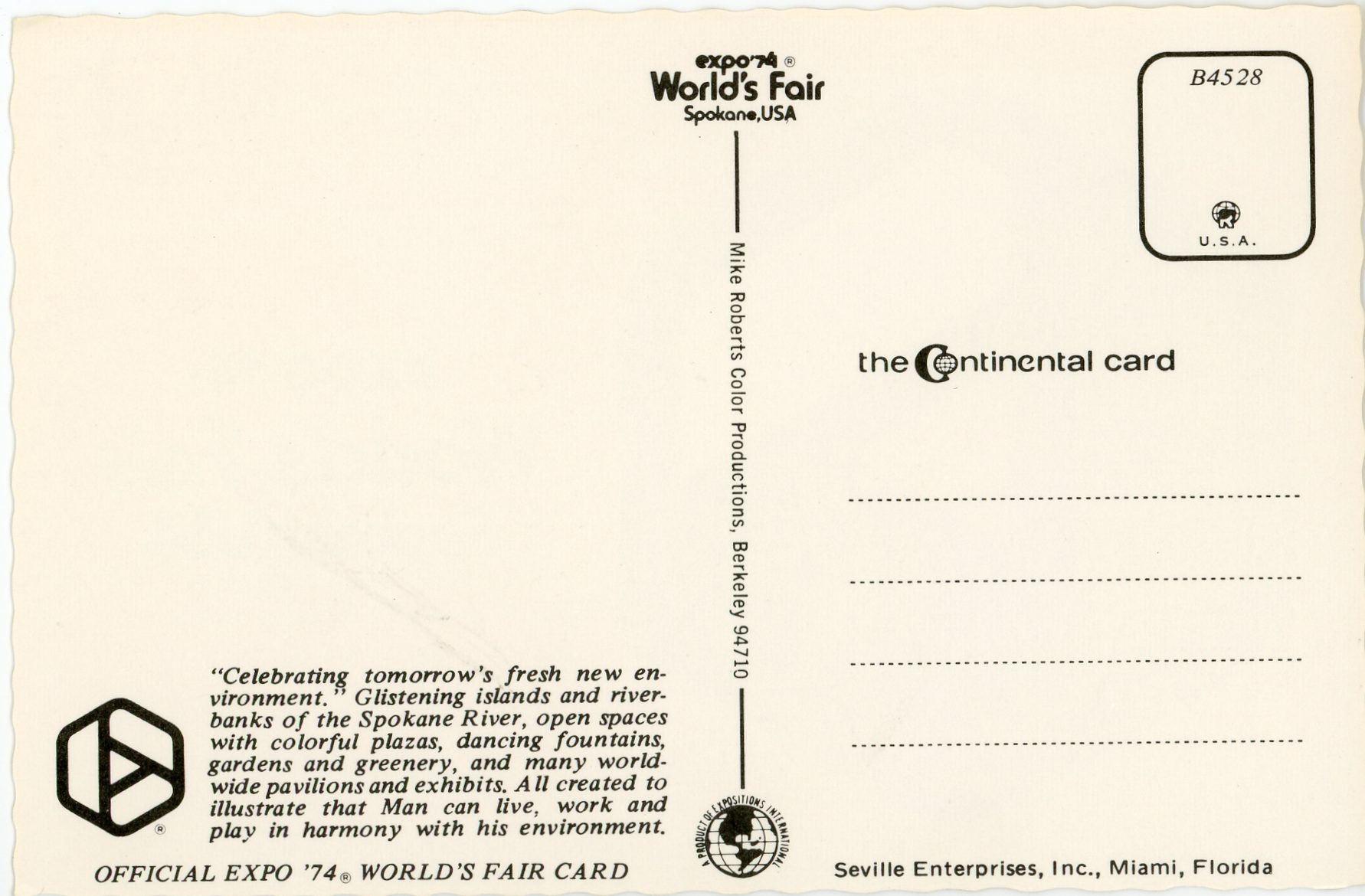Irwin Caplan
This piece from the University of Washington’s collection advertises Caplan’s partnership with Vernell's Buttermints.
For overall art direction, Expo turned to Irwin Caplan, a Seattle-based illustrator, painter, and cartoonist. "Cap" had previously designed the poster for the Seattle World's Fair in 1962 and was nationally known for his two syndicated comic strips, “Famous Last Words” and “48 States of Mind.” He was an influential and prolific artist in the commercial sphere, as well as a prominent fine artist. His work was displayed at the National Gallery and the Metropolitan Museum of Art, and several Seattle museums have his paintings in their permanent collections. He graduated from the University of Washington and later returned to teach art there.
Born in Seattle to Russian immigrants, Irwin Caplan was a lifelong Northwesterner. In a 2001 interview with the Jewish Historical Society, he reflected on his upbringing and career, including this brief mention of his involvement with Expo '74:
AR: Okay. All right. Now, you told me also that you had something to do with the Expo in Spokane in 1974.
IC: Right, I was Art Director of the fair, which was a wonderful job to have because they were really rebuilding Spokane from top to bottom when the fair was coming on. There’s a river that runs through the city and buildings on the side that had to be replaced. So while it wasn’t an overwhelmingly huge undertaking, like Seattle World’s Fair, it was [a] nice one.
AR: Okay. How long did that? [sic]
IC: That took about a year. You may not want to, it’s not terribly important, but when I was going to meet with the principals of the Expo, I was anticipating it might be very difficult of a job. Maybe one that was superior to my abilities at the time. We set up the meeting and I came into the room and the new overall director, whose presence I, you know, not feared, but hoped, anticipated it would be all right, turns out to be another kid I went to college with.
Caplan’s “Hidden City” is in the collection of the Seattle Art Museum.
The booklet shown below features poems and descriptions of plans for Expo 74, interleaved with vellum pages featuring Irwin Caplan's colorful paintings of the fair. Caplan and his team created a full suite of cheerful, colorful images that were widely used in promotional materials. These pieces combine his efficient cartoon line art style with vivid washes of bright color. Most Caplan art that would appear throughout Expo is cropped or modified from the images seen here.

















Produced in advance of most fair materials (the back page bears a 1973 copyright), the writing and art in this booklet provide insight into some aspects of the fair that would change or disappear by the time of the actual event. Although the art depicts the updated pavilion design in several places, the text and art also allude to the “Environmental Communications Center,” a concept from the Tule Mat Pavilion era that did not survive to the actual construction phase. The depictions of the U.S. Pavilion interior also show the garden exhibit that was originally planned.
The only non-U.S. nations mentioned in this booklet as participating in Expo ‘74 are Taiwan, Canada, the USSR, and Japan. Some aspects of the art hint at other potential national participants, such as the Czechoslovakian flag in the flag display or the sombrero-wearing, presumably Mexican guitar player who appears on multiple pages.
The art of this booklet depicted the high-soaring conceptual version of the fairground gondolas that was included in this era of design. Other than the color of the cars, the “Ride Over The Falls” section of the gondolas is a fairly accurate representation of what was eventually present at the fair. While the U.S. Pavilion would ultimately become the iconic structure of Expo ‘74, this booklet emphasizes the gondola ride as the fair’s “center of climactic wonder.”
Organizers got their money’s worth from the Caplan art, putting it on every type of souvenir, using it in promotional materials, and cropping it into postcards. Some examples of the Caplan art in use appear in the slideshow below. Note that the gondola ride was generally titled “Skyway Safari” and the Japanese Garden was previously labeled as “Oriental Garden” for unknown reasons. The Caplan images were widely bootlegged, and some of these items may not represent an officially licensed use of the art.
The Caplan images were a natural fit for postcards.








































